Why You (Desperately) Need a Life Raft on Your Boat
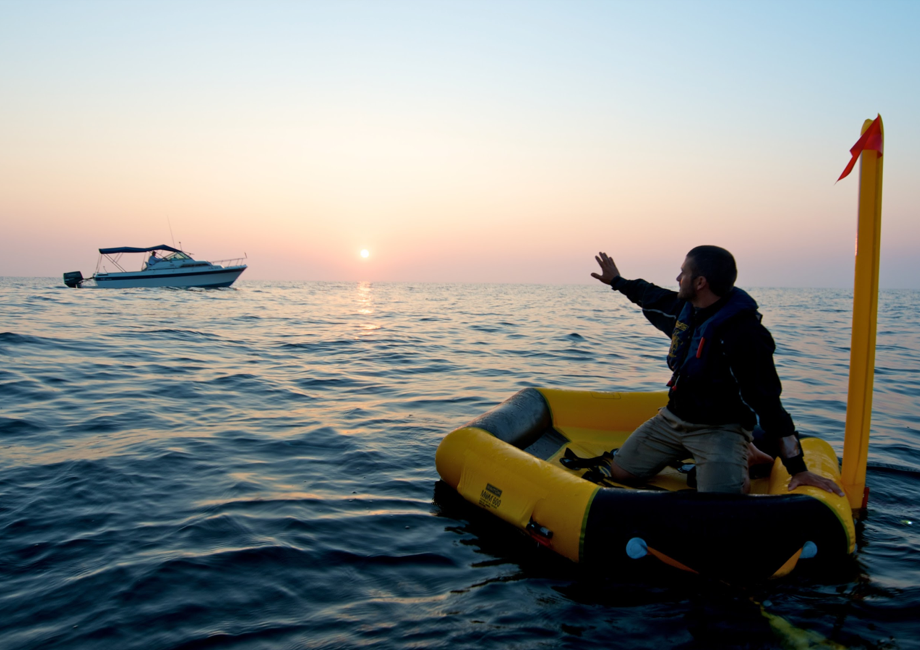
Why pay $5,000 for a boating extra that you’ll probably never put to its intended use throughout its functional lifespan? Because, in the case of life rafts, they can have a significant effect on your functional lifespan.
A life raft is in effect an insurance policy that you carry aboard, hoping to never need, but assured by the fact that it’s there, ready to help when must have it.
Good life rafts are expensive, especially those intended for open-ocean use for multiple persons. But this is obviously not the place where you’ll feel secure with a bargain-basement model.
Do Your Research
The choice of rafts depends on where, when and how you use your boat, as well as how many guests you’re likely to have aboard. As usual in all things that have to do with boating safety, the prudent thing to do is hope for the best but plan for the worst.
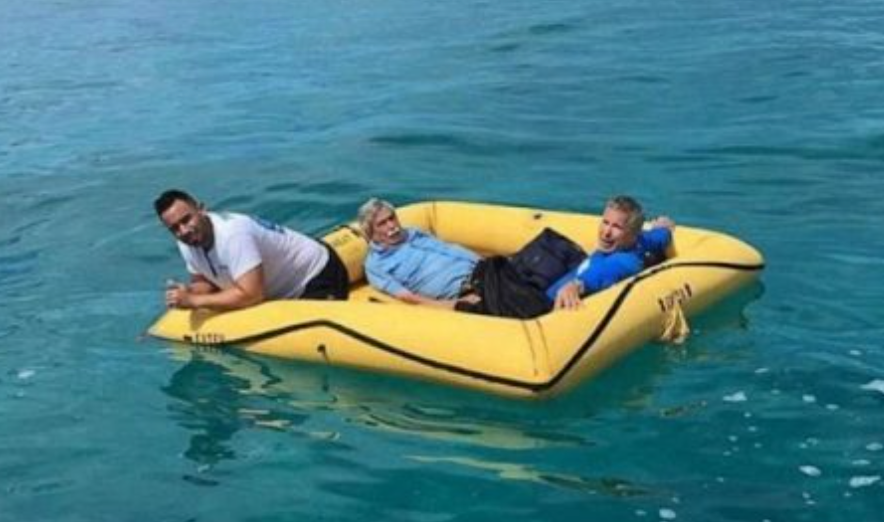
It’s safe to say almost every recreational boater that has ever had to use his life raft under duress never expected to do so. Even if your boat has a tender, it’s wise to also carry enough life-raft capacity to rescue all aboard, because that tender may not be survivable in extreme sea conditions.
Types of Life Rafts
There are three basic life raft designs: coastal, offshore, and ocean-going.
Coastal rafts are designed for nearshore use. They’re adequate if you only boat where there is a high probability of rescue within a day. They lack features needed for long-term survival, including double inflation tubes, insulated flooring and canopies.
However, they’re very compact and easily stowed even on open boats, and of course they cost considerably less than more robust models. They’re for inshore use, typically up to 15 miles (24.14 km) from shore, within VHF radio or cell phone range, and in close proximity to Coast Guard or other rescue agencies.

The Winslow Super-Light Rescue raft, for example, weighs just 16 lbs. (7.26 kg) and measures just 8” x 14” x 16” (20.32 cm x 35.56 cm x 40.64 cm) when stowed, making it easy to store even on small open boats. (By comparison, the Winslow Super-Light Offshore Plus, also with a capacity of four, weighs 50 lbs. (22.68 kg) and measures 10.5" X 16" X 21" (26.67 cm x 40.64 cm x 53.34 cm) due to the included canopy, double tubes and rescue pack.)
Offshore rafts are intended to extend survival time to four or five days. They include supported canopies and two buoyancy tubes with the second providing an emergency backup to keep you afloat. Their use would typically include locations up to 50 miles (80.47 km) from shore, in areas where large amounts of shipping traffic are present, with search and rescue coverage rapidly deployable.
Ocean-going rafts are designed for long-term survival in difficult conditions. They include multiple large buoyancy tubes, insulated flooring, two-layer canopies, lights inside and out, a drogue to prevent the raft from being flipped by wind and waves, a water-collection system incorporated in the canopy and other features that make them suitable for survival up to 30 days. They are the most costly of the three classes, but essential for long-distance cruising.
Features of Quality Life Rafts
When shopping for a life raft, in addition to the general categories above, you’ll want to consider:
- Capacity
- Ballast
- Floors
- Interior Depth
- Canopies
Extras
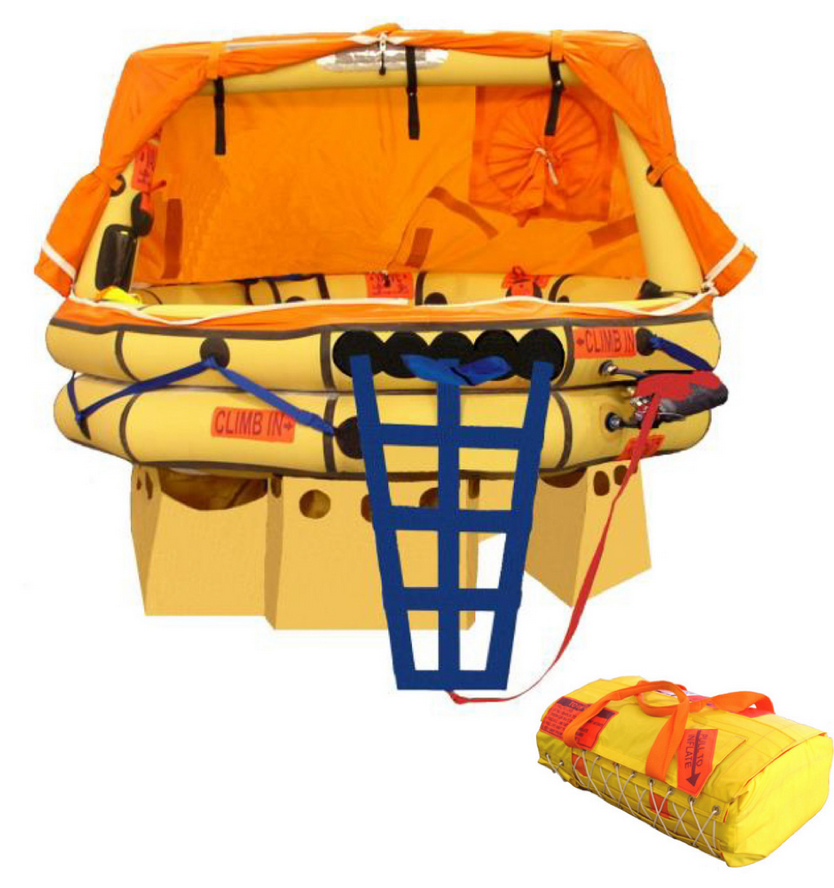
Capacity
The capacity is the maximum number of people for which the raft is rated by the USCG or SOLAS (Safety Of Life At Sea) ratings. Buy a raft (or two or three) with enough capacity to give everyone likely to be aboard adequate space, particularly if you cruise in remote areas where quick rescue is less likely. Rafts are available in sizes rated from four to 50 persons. On large yachts, you’ll want at least one near the bow, one near the stern.
Rafts are rated based on 4 sq. ft. (.37 sq. m) of space for each person. Think about that; each of you would be sitting in a space 2’ x 2’ (.61 m x .61 m) or thereabouts. For that reason, it’s wise to buy a raft twice the size of the crew you expect to carry, greatly multiplying the available sitting space. The larger raft will also be more sea-kindly, and though it’s more expensive, it’s not that much more expensive.
Ballast
Life rafts depend on water ballast to prevent them lipping over in wind and waves. Most have large rubber- or composite-coated fabric scoops on the bottom that deploy when the raft hits the water. The scoops pick up hundreds of pounds of water and act to stabilize the otherwise light hull.
Ballast bags also reduce rapid wind draft by creating drag. They also act to stabilize the raft from excessive motion in some sea conditions. Nearly all rafts also include a drogue chute, sort of an oversized water-catching bucket, on 50’ (15.24 m) or more of line, an added assurance that wind and waves won’t flip the raft.
Floors
Single-thickness floors are standard for inshore rafts. While they provide a place to sit, they offer no insulation from potentially cold water below. Offshore and coastal rafts more often have double floors or insulated flooring that provides more protection against cold water plus added thickness to protect against tears. Flooring insulation is often closed cell foam on top of the composite or rubberized flooring material.
Interior Depth
Single-tube rafts have much shallower interiors than two-tube models where one is stacked atop the other.

Tubes are typically 9” (22.86 cm), 9.5” (24.13 cm) or 10” (25.4 cm) in diameter. The larger the tubes, the deeper the interior and the greater the floatation. Large multiple tubes also give the raft more effective freeboard.
On the other hand, taller tubes can also make boarding from the water more difficult if the ladder system and boarding platform are not well-designed.
Canopies
While a canopy may seem unnecessary if you only boat in subtropical waters, those who spend time in life rafts often report more problem with sun exposure than with cold, spray and rain. A canopy is a huge plus if you have to spend more than a half-day awaiting rescue, whether sun or cold is the issue.
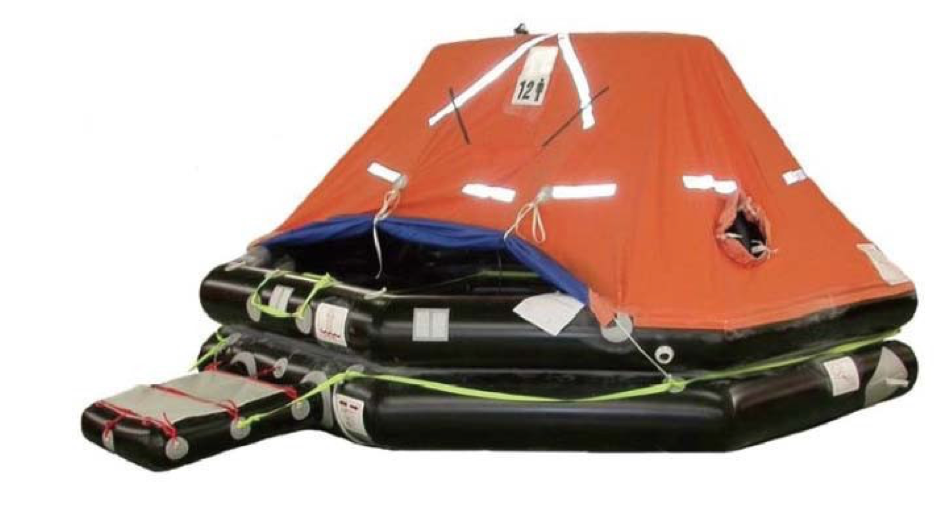
Like other aspects of life rafts, some canopies are made for relatively light duty, others for more challenging conditions. The best models for offshore use typically have multiple inflated supports to hold them up. They can be positioned fully closed, half open or as a sail to help the raft make way when winds are favorable.
They have clear viewing ports, a big asset in keeping seasickness under control as well as watching for rescuers on the horizon. A water collection system is usually part of the canopy on a quality raft as well.
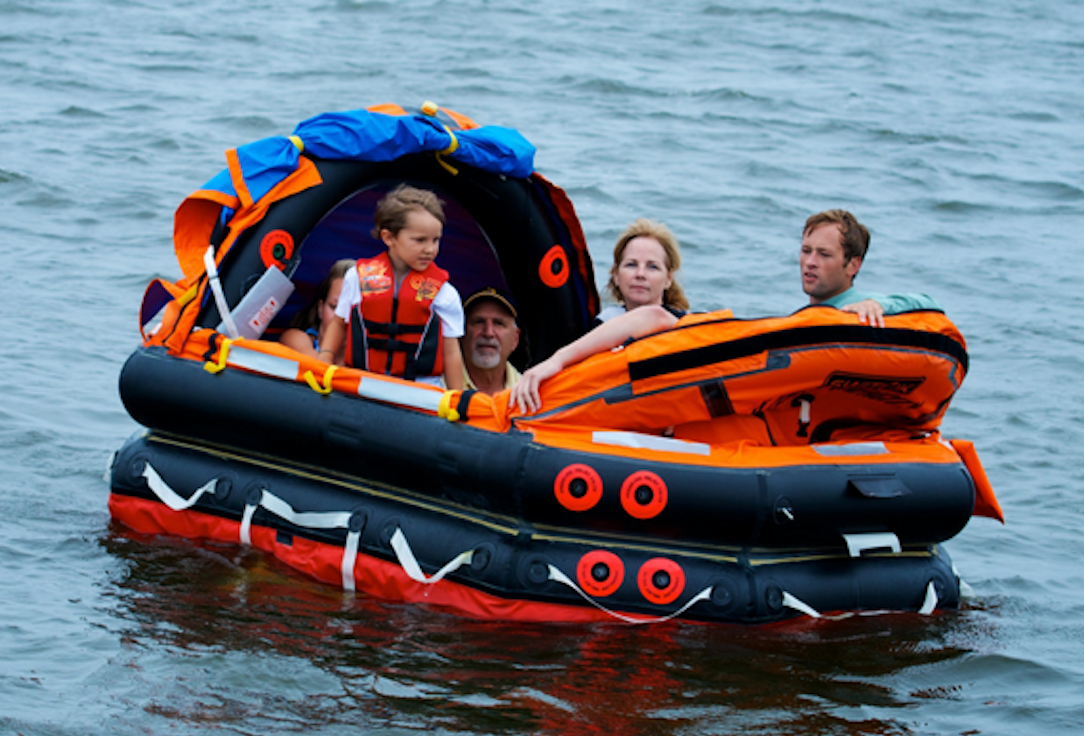
Switlik makes a high-end raft designed for U.S. Coast Guard helicopter rescue teams. Though it is expensive, the raft is exceptionally well built. The 6-person model, SAR-6 Transoceanic, lists for $8,599.
The SAR-6 has 840 denier nylon buoyancy tubes coated on both sides with abrasion-resistant urethane and overlapped seams are taped inside and out. It has automatically-activated interior and exterior lighting and a stability device the company says will keep the raft stable even in a close-range helicopter rescue, where other designs sometimes get flipped by the rotor wash.
They also include a self-activating EPIRB that begins sending your location when the raft deploys.
At 121 lbs. (54.88 kg), the SAR-6 comes inside a fiberglass case mounted on deck, ready to serve when needed. It takes up space, but if you need one far at sea, a raft like this would be a great asset.
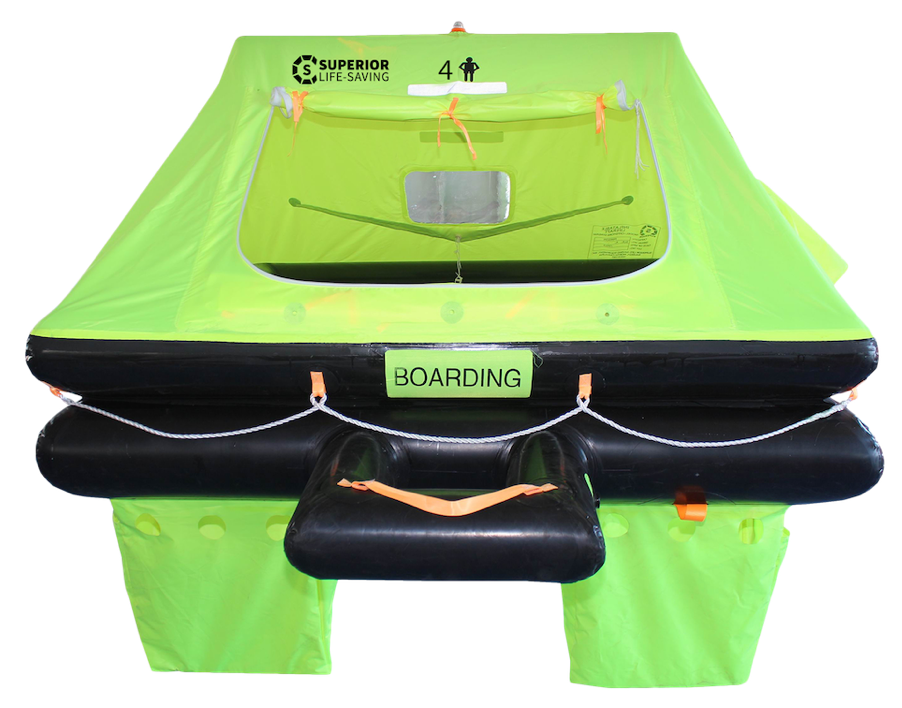
Extras
Most life rafts include a service pack that will be loaded with useful items. Included are likely to be a bailer, an air pump to keep the buoyancy tubes fully-inflated, multiple signaling devices including parachute and hand flairs, a first-aid kit, fishing kit, knife and more. Though these items will be useful if you need them aboard, you’ll also want a personal ditch bag to grab at the moment you have to abandon ship. It includes an EPIRB, a hand-held VHF, fresh water, MRE’s and essential medicines.
Servicing Life Rafts
Life rafts deteriorate over time and their charging systems slowly lose the capability to inflate them. For that reason, regular servicing by a qualified center should be part of your standard owning procedure. There’s no point in investing thousands in a quality raft and then failing to spend what it takes to assure that it does what’s needed when the time comes. The service interval is typically every three years, with fees ranging from around $200 for the smallest rafts to more than $1,000 for the larger models.

During servicing, the raft case is opened and the raft is inflated, visually inspected and pressure-tested to detect leaks. The survival kit is removed and all expired consumables, like batteries, flares and survival food are replaced. After testing, the raft and survival kit are repacked and then vacuum-sealed in a new bag to remove air and moisture, and to compress the raft to fit inside its valise or canister.
One thing to keep in mind when buying a raft is that some smaller manufacturers have fewer qualified service centers around the world than the larger companies. If you expect to regularly cruise internationally, this might be a factor to consider — or plan to get your rafts serviced when you’re in your home port.
Finding a Spot for Your Raft
Ideally, the raft should be in a position where it can self-launch should the boat sink rapidly, as it might if swamped by a following sea. On most boats, it will be stored in a satchel or hard compartment that pops open when the raft is activated by a hard pull on the lanyard. A hydrostatic release unit is a great extra that assures even if the boat sinks rapidly, the raft inflates and pops to the surface, ready for boarding.
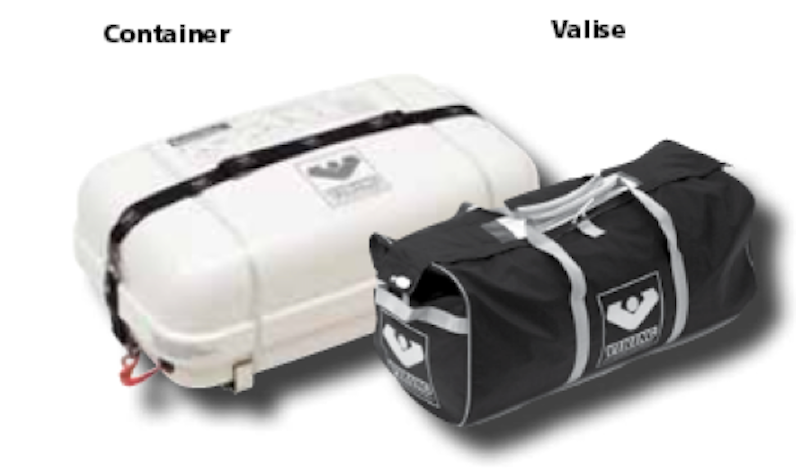
If your raft can’t be stored atop the bridge, on the transom or on an open deck, put it in an on-deck compartment, with nothing else on top of it. This will allow fast access without someone having to go below, where no one should be in a fire or flooding emergency.
Note that an 8-person ocean-going raft is likely to weigh 100 lbs. (45.36 kg). If you don’t have a team on board capable of lifting that much weight out of the compartment in a hurry, your raft will be useless.
In that case, as well as for open-ocean crossings where conditions might get dicey rather quickly, it’s best to have the raft lashed down on deck so that it’s immediately ready to go when an emergency strikes. It should also be put in a spot where the crew won’t be stepping on it, which can cause premature wear or damage.
Renting a Life Raft
If you normally boat in your home bay but decide to take an extended one-time cruise, renting a life raft may make sense. Rentals are typically around $400 to $500 per month, plus a $150 deposit. Obviously, if you’re cruising more than a couple of months, it might be wise to buy, but this can be an economical one-time alternative.
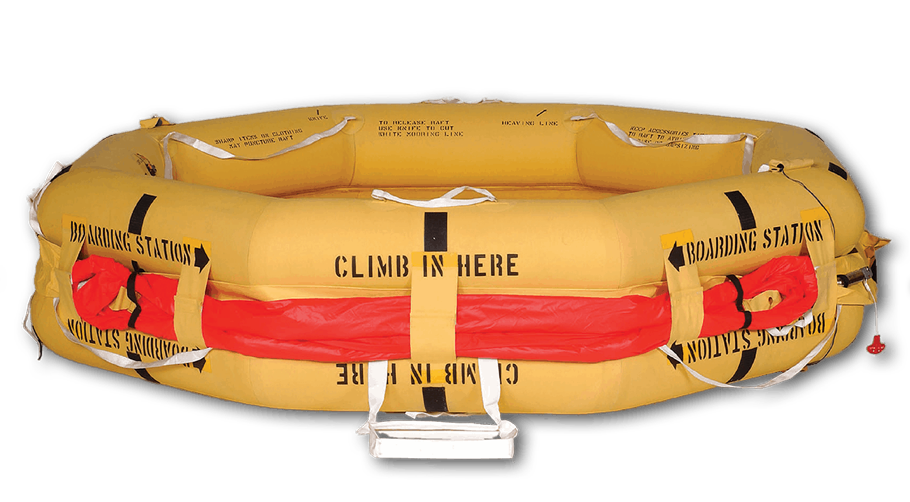
Many companies rent life rafts, including some that will ship them to your location nationwide. Check these out: https://www.liferaftstore.com; http://www.avalonrafts.com/raft_rental.htm ; https://www.seasafety.com/rental-life-rafts.